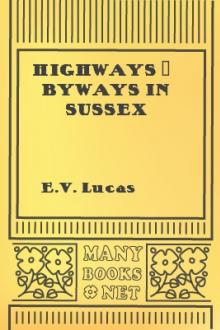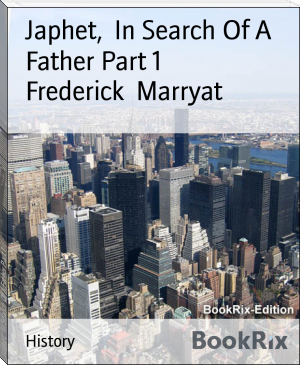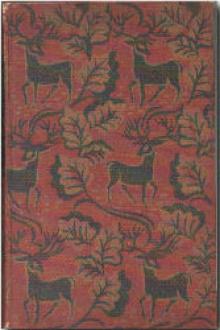Highways & Byways in Sussex by E. V. Lucas (e reader pdf best .txt) 📕

- Author: E. V. Lucas
- Performer: -
Book online «Highways & Byways in Sussex by E. V. Lucas (e reader pdf best .txt) 📕». Author E. V. Lucas
Hurstmonceux Castle stands on the very edge of Pevensey Level, the only considerable structure between Pevensey and the main land proper. In the intervening miles there are fields and fields, through which the Old Haven runs, plaintive plovers above them bemoaning their lot, and brown cows tugging at the rich grass. On the first hillock to the right of the castle as one fronts the south, rising like an island from this sea of pasturage, is Hurstmonceux church, whose shingled spire shoots into the sky, a beacon to travellers in the Level. It is a pretty church with an exterior of severe simplicity. Between the chancel and the chantry is the large tomb covering the remains of Thomas Fiennes, second Lord Dacre of Hurstmonceux, who died in 1534, and Sir Thomas Dacre his son, surmounted by life-size stone figures, each in full armour, with hands proudly raised, and each resting his feet against the Fiennes wolf-dog.
In the churchyard is the grave of Julius Hare, once vicar of Hurstmonceux, and the author, with his brother Augustus, of Guesses at Truth. Carlyle's John Sterling was Julius Hare's first curate here.
Hurstmonceux Castle was once the largest and handsomest of all the commoners' houses in the county. Sir Roger de Fiennes, a descendant of the John de Fiennes who married Maude, last of the de Monceux, in the reign of Edward II., built it in 1440. Though the Manor house of the de Monceux, on the site of the present castle, lacked the imposing qualities of Roger de Fiennes' stronghold, it was hospitable, spacious, and luxurious. Edward the First spent a night there in 1302. One of the de Monceux was on the side of de Montfort in the Battle of Lewes, and the first of them to settle in England married Edith, daughter of William de Warenne and Gundrada, of Lewes Castle.
How thorough and conscientious were the workmen employed by Roger de Fiennes, and how sound were their bricks and mortar, may be learned by the study of Hurstmonceux Castle to-day. In many parts the walls are absolutely uninjured except by tourists. The floors, however, have long since returned to nature, who has put forth her energies without stint to clothe the old apartments with greenery. Ivy of astonishing vigour grows here, populous with jackdaws, and trees and shrubs spring from the least likely spots.
The castle in its old completeness was, practically, a little town. From east to west its walls measured 206½ feet, from north to south, 214½; within them on the ground floor were larders, laundries, a brewhouse, a bakehouse, cellars, a dairy, offices, a guard room, pantries, a distillery, a confectionery room, a chapel, and, beneath, a dungeon. Between these were four open courts. Upstairs, round three sides of the Green Court, were the Bird Gallery, the Armour Gallery, and the Green Gallery, and lords' apartments and ladies' apartments "capable of quartering an army," to quote a writer on the subject. On each side of the entrance, gained by a drawbridge, was a tower—the Watch Tower and the Signal Tower.
In the reign of Elizabeth a survey of Hurstmonceux was taken, which tells us that in the park were two hundred deer, "four fair ponds" stocked with carp and tench, a "fair warren of conies," a heronry of 150 nests, and much game. The de Fiennes, or Dacres as they became, had also a private fishery in Pevensey Bay, seen from the Watch Tower as a strip of blue ribbon.
In addition Hurstmonceux had a ghost, who inhabited the Drummers' Hall, a room between the towers over the porter's lodge, and sent forth a mysterious tattoo. Sometimes he left his hall, this devilish musician, and strode along the battlements drumming and drumming, a terrible figure nine feet high. Most people were frightened, but there were those who said that the drummer was nothing more nor less than a gardener in league with the Pevensey smugglers, whose notes, rattled out on the parchment, rolled over the marsh and gave them the needful signal.
Hurstmonceux once had a very real tragedy. The third Lord Dacre, one of the young noblemen who took part in the welcoming of Ann of Cleves when she landed in England preparatory to her becoming the wife of Henry VIII., was so foolish one night in 1541 as to accompany some of his roystering companions to the adjacent park of Sir Nicholas Pelham, near Hellingly, intent on a deer-stealing jest. There three gamekeepers rose up, and a bloody battle ensued in which one John Busbrig bit the dust. Pelham was furious and demanded justice, and Lord Dacre, though he had taken no part in the fray, was held responsible. Three of his friends were hanged at Tyburn, and, in spite of all the influence that was brought to bear, he also was executed. The next Dacre of importance married the Lady Ann Fitzroy, a natural daughter of Charles II., and was made Earl of Sussex. Financial losses compelling him to sell Hurstmonceux, a lawyer named George Naylor bought it in 1708, leaving it, on his death, to the Right Rev. Francis Hare, Bishop of Chichester. It remained in the family as a residence until, in 1777, an architect pronounced it unsafe, and the interior was converted into materials for the new Hurstmonceux Place in the park to the north-west. Since then nature has had her way with it.
Horace Walpole's visit, as described in one of his letters, gives us an idea of Hurstmonceux in the middle of the eighteenth century, a little before it became derelict:—"The chapel is small, and mean; the Virgin and seven long lean saints, ill done, remain in the windows. There have been four more, but they seem to have been removed for light; and we actually found St. Catherine, and another gentlewoman with a church in her hand, exiled into the buttery. There remain two odd cavities, with very small wooden screens on each side the altar, which seem to have been confessionals. The outside is a mixture of grey brick and stone, that has a very venerable appearance. The draw-bridges are romantic to a degree; and there is a dungeon, that gives one a delightful idea of living in the days of soccage and under such goodly tenures. They showed us a dismal chamber which they called Drummer's-hall, and suppose that Mr. Addison's comedy is descended from it. In the windows of the gallery over the cloisters, which leads all round to the apartments, is the device of the Fienneses, a wolf holding a baton with a scroll, Le roy le veut—an unlucky motto, as I shall tell you presently, to the last peer of that line. The estate is two thousand a year, and so compact as to have but seventeen houses upon it. We walked up a brave old avenue to the church, with ships sailing on our left hand the whole way."
Hurstmonceux is famous not only for its castle, but for its "trugs," the wooden baskets that gardeners carry, which are associated with Hurstmonceux as crooks once were with Pyecombe, and the shepherds' vast green umbrellas, on cane frames, with Lewes.
CHAPTER XXXVI HASTINGSThe ravening sea—Hastings and history—Titus Oates—Sir Cloudesley Shovel—A stalwart Nestor—Edward Capel—An old Sussex harvest custom—A poetical mayor—Picturesque Hastings—Hastings castle—Hollington Rural and Charles Lamb—Fairlight Glen and the Lover's Seat—Bexhill.
Brighton, as we have seen, was made by Dr. Russell. It was Dr. Baillie, some years later, who discovered the salubrious qualities of Hastings. In 1806, when the Duke of Wellington (then Major-General Wellesley) was in command of twelve thousand soldiers encamped in the neighbourhood, and was himself living at Hastings House, the population of the town was less than four thousand; to-day, with St. Leonard's and dependant suburbs, Hastings covers several square miles. With the exception of the little red and grey region known as Old Hastings, between Castle Hill and East Hill, the same charge of a lack of what is interesting can be brought against Hastings as against Brighton; but whereas Brighton has the Downs to offer, Hastings is backed by country of far less charm. Perhaps her greatest merit is her proximity to Winchelsea and Rye.
Hastings, once one of the proudest of the Cinque Ports, has no longer even a harbour, its pleasure yachts, which carry excursionists on brief Channel voyages, having to be beached just like rowing boats. The ravages of the sea, which have so transformed the coast line of Sussex, have completely changed this town; and from a stately seaport she has become a democratic watering place. Beneath the waves lie the remains of an old Priory and possibly of not a few churches.
Hastings has been very nigh to history more than once, but she has escaped the actual making of it. Even the great battle that takes its name from the town was fought seven miles away, while the Duke of Normandy, as we have seen, landed as far distant as Pevensey, ten miles in the west. But he used Hastings as a victualling centre. Again and again, in its time, Hastings has been threatened with invasion by the French, who did actually land in 1138 and burned the town. And one Sunday morning in 1643, Colonel Morley of Glynde, the Parliamentarian, marched in with his men and confiscated all arms. But considering its warlike mien, Hastings has done little.
Nor can the seaport claim any very illustrious son. Titus Oates, it is true, was curate of All Saints church in 1674, his father being vicar; and among the inhabitants of the old town was the mother of Sir Cloudesley Shovel, the admiral. A charming account of a visit paid to her by her son is given in De la Prynne's diary: "I heard a gentleman say, who was in the ship with him about six years ago, that as they were sailing over against the town, of Hastings, in Sussex, Sir Cloudesley called out, 'Pilot, put near; I have a little business on shore.' So he put near, and Sir Cloudesley and this gentleman went to shore in a small boat, and having walked about half a mile, Sir Cloudesley came to a little house [in All Saints Street], 'Come,' says he, 'my business is here; I came on purpose to see the good woman of this house.' Upon this they knocked at the door, and out came a poor old woman, upon which Sir Cloudesley kissed her, and then falling down on his knees, begged her blessing, and calling her mother (who had removed out of Yorkshire hither). He was mightily kind to her, and she to him, and after that he had made his visit, he left her ten guineas, and took his leave with tears in his eyes and departed to his ship."
Hastings had a famous rector at the beginning of the last century, in the person of the Rev. Webster Whistler, who combined with the eastern benefice that of Newtimber, near Hurstpierpoint, and managed to serve both to a great age. He lived to be eighty-four and died full of vigour in 1831. In 1817, following upon a quarrel with the squire, the Newtimber living was put up for auction in London. Mr. Whistler decided to be present, but anonymous. The auctioneer mentioned in his introduction the various charms of the benefice, ending with the superlative advantage that it was held by an aged and infirm clergyman with one foot in the grave. At this point the proceedings were interrupted by a large and powerful figure in clerical costume springing on the table and crying





Comments (0)